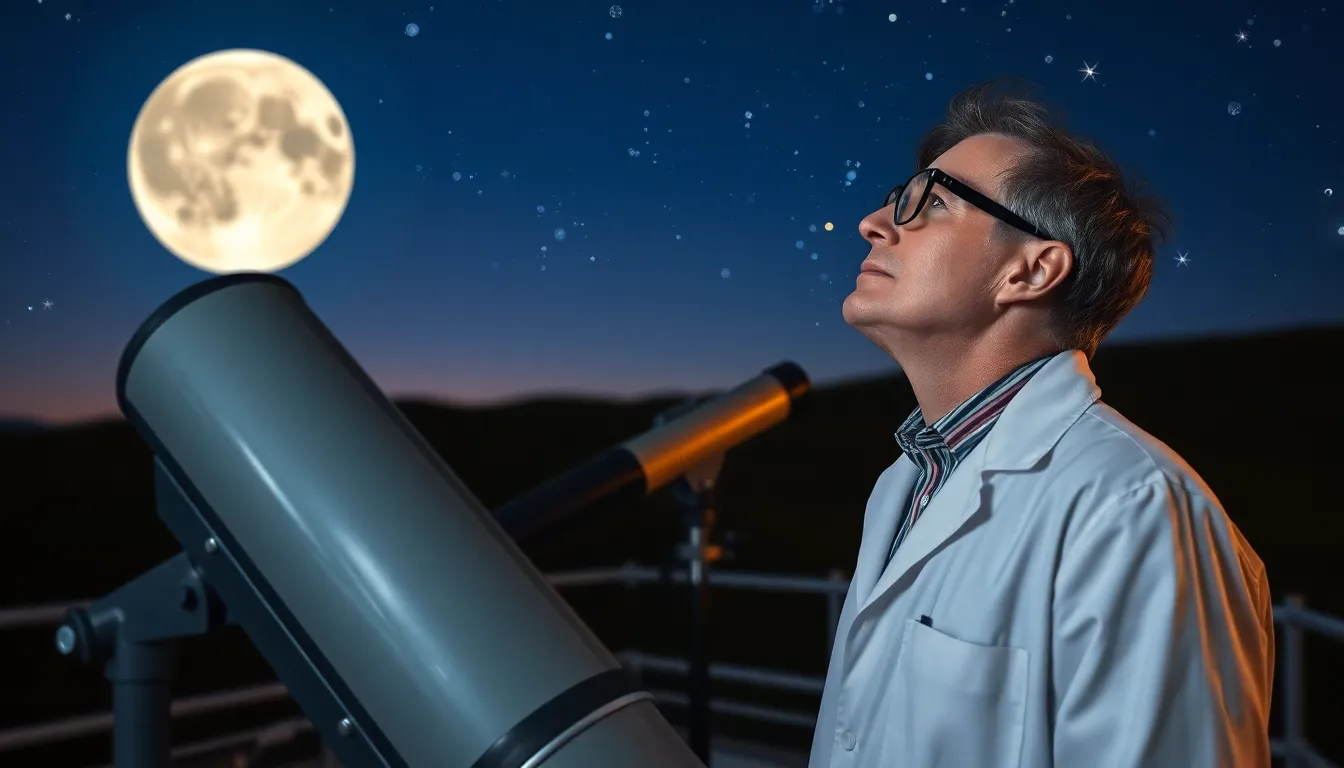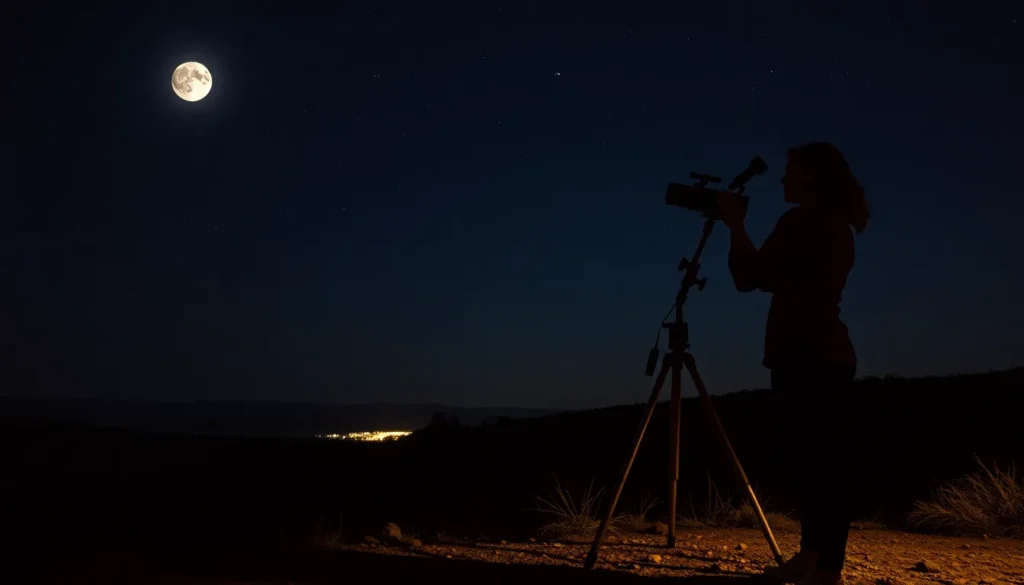Ever wondered if you’ve got a secret celestial buddy hanging out in the night sky? Meet the second moon, a quirky little phenomenon that has captured imaginations and sparked curiosity. While most people are busy gazing at our beloved Luna, this elusive companion has a habit of playing hide and seek.
Overview of the Second Moon Phenomenon
The second moon phenomenon often captures public attention due to its unique characteristics. Astronomers classify it as a temporary satellite, unlike the Earth’s primary moon. Various celestial objects can act as second moons, including asteroids or small comets that enter the Earth’s orbit. These objects can appear bright and prominent during specific times.
Current observations indicate that Earth has been visited by several second moons, each with its own orbit and duration of visibility. Such occurrences happen sporadically, usually lasting from a few days to several months before the object moves away. Astronomers monitor these events closely, using advanced telescopes and imaging techniques to track their paths.
Notably, 2020 CD3, identified in 2020, serves as an example of a second moon. This small asteroid measured roughly 1.9 meters wide and orbited the Earth for about three years. Scientists frequently analyze its trajectory to understand how such objects interact with the Earth’s gravitational pull.
Second moons may not always be visible, but their presence influences space weather and can provide valuable data for research. Numerous studies link these occurrences to our understanding of the solar system’s dynamics. Interest in tracking second moons continues to grow, enriching the ongoing exploration of our celestial neighborhood.
Current Position of the Second Moon

The second moon’s position changes frequently, depending on its orbit. Current tracking methods help determine its location with precision.
Astrological Significance
Astrologers often view second moons as potent symbols. With their transient nature, these celestial bodies represent change and transformation in astrological readings. Many people believe that the presence of a second moon can intensify energies associated with specific zodiac signs. Observances suggest that its appearance can coincide with pivotal moments, encouraging introspection and personal growth. Some practitioners focus on the second moon when setting intentions or making significant life decisions. These beliefs highlight the intersection of astronomy and astrology, reflecting the cultural impact of celestial phenomena.
Scientific Observations
Scientists meticulously monitor the second moon’s trajectory using advanced technology. Observatories utilize telescopes and imaging techniques to analyze these temporary satellites. Recent data shows several notable second moons with varying sizes and orbits. The asteroid 2020 CD3, for example, provided valuable insights during its time in Earth’s orbit. Research demonstrates that tracking these objects enhances knowledge about gravitational interactions and orbit dynamics. Continued observations allow astronomers to predict future occurrences and assess their potential impact on Earth, contributing to the broader understanding of our cosmic environment.
Historical Context
The phenomenon of a second moon has fascinated people throughout history. Various celestial encounters have contributed to this intrigue, shaping observational data and theories.
Past Sightings of the Second Moon
In 2006, for instance, an asteroid designated 2006 RH120 orbited Earth for 11 days, gaining significant attention. More recently, 2020 CD3 emerged, capturing scientists’ focus as it remained in orbit for nearly three years. These sightings demonstrate the transient nature of second moons, each bringing unique attributes to study. Observers noted variations in brightness and size, which contributed to their classification. Historical records showcase several other encounters, yet most second moons remain fleeting, vanishing from view after brief periods.
Theories About Its Existence
Several theories explain the existence of second moons, derived from celestial mechanics and gravitational interactions. One prominent theory suggests that temporary satellites, like captured asteroids, enter Earth’s orbit when their trajectories align. Another theory posits that gravitational perturbations from the Earth-Moon system cause these celestial objects to remain in transient orbits. Observers and scientists alike emphasize the importance of understanding their behavior and interactions. Ongoing research aims to further refine these theories, uncovering patterns and predicting future occurrences of second moons. Enhanced tracking technology continues to provide valuable insights into their dynamics and implications.
Observing the Second Moon
Observing a second moon can be an exciting experience. Understanding where to look enhances the chances of spotting this ephemeral celestial object.
Best Locations for Viewing
Ideal viewing locations include places with minimal light pollution. Rural areas typically offer clearer skies than urban centers, making them perfect for observation. Elevated terrains, such as hills or mountains, provide unobstructed views of the horizon. Open fields or beaches often feature expansive skies, allowing for better visibility. Notably, some astronomers also recommend dark sky parks, specifically designated for stargazing. These locations typically maximize observation opportunities for transient celestial bodies.
Recommended Tools for Observation
To improve chances of seeing a second moon, specific tools can enhance the experience. Binoculars prove helpful for close-up viewing of faint celestial objects. Telescopes, particularly those with larger apertures, significantly enhance clarity and detail. Smartphone apps track the positions of celestial objects, aiding in determining optimal times for observation. Additionally, star charts or astronomy books provide valuable context, helping identify the object’s location against the backdrop of stars. Many enthusiasts also utilize cameras equipped with long exposure capabilities, capturing stunning images of these transient occurrences.
The allure of the second moon continues to captivate both astronomers and enthusiasts alike. Its transient nature adds an element of mystery to the night sky. As technology advances the ability to track these celestial visitors improves, fostering greater interest in their unique behaviors and influences.
Understanding the dynamics of second moons not only enhances astronomical knowledge but also enriches personal experiences for those who seek to observe them. With every sighting comes an opportunity for wonder and discovery, reminding us of the vastness of our universe and its ever-changing nature. Keep an eye on the skies as the next second moon may be just around the corner.





